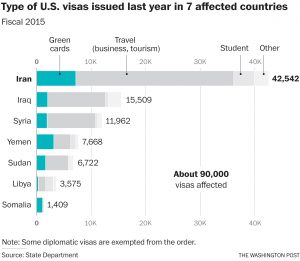Executive Summary
Adult day centers are spread far and few with low budgets. With 53% of adults who have diseases such as Parkinson’s, multiple sclerosis, traumatic brain trauma, and other neurological diseases being between ages 18 and 74, there is need for adult day programs to help younger adults with neurological diseases and conditions. H.R. 325: Adult Day Center Enhancement Act would expand and enhance existing day programs.
Introduction
One in six people in the United States lives with a neurological disease or condition. A family caregiver, someone related to a person with a neurological disease who takes care of them, provides around $470,000,000,000 in support and care a year. Adult day centers can help offset that cost and help provide medical care, rehabilitation programs, nutrition therapy, social interaction, activities, and much more. They help to decrease the burdens placed upon caregivers as well as reduce dependency and increase quality of living in those who have neurological diseases and conditions. Currently, the majority of adult day centers cater to an older clientele and do not have appropriate programs needed to serve younger adults. Research involved in this bill looks at adult day centers to see which ones are successful and why, identifying adult day centers which serve young adults, develop a set of standards for programs to be successful, and discover the extent to which the Administration for Community Living supports adult day centers through current federal grants.
Approaches and Results
Within 90 days of gathering information on adult day centers, The Assistant Secretary for Aging will create a competitive grant program for awarding grants annually through the Administration for Community Living. These programs would have to be proven as eligible based on guidelines for the best practices based on findings from the previously mentioned research, as well as having to serve young adults. Within a year of giving out grants, and every year thereafter, the Assistant Secretary for Aging will publish a report. These reports will describe the adult day centers receiving funding, how much funding they receive, performance goals, and plans to improve the programs.
Adult day centers have been shown to have many benefits for those who have neurological diseases and conditions. These include improvements in functional status, social support, as well as reductions in fatigue, depression, and pain. Through improved day center programs, less adults will need to be placed in nursing homes and can be cared for at home, reducing cost to families. Health and social services are available while living at home rather than having to check into a hospital or home.
Conclusion
By providing federal grants to these adult day centers, these centers can develop stronger and more successful programs to better support young adults living with neurological diseases and conditions. It can help take financial burdens off of families as well as improve quality of living for those individuals. Regulation of standards for programs through research and funding can help improve these centers as well as the services they offer.
Implications and Recommendations
This bill was introduced January 5, 2017 and is currently being overviewed by a committee. You can support this bill, and others bills similar to it, by calling your congress representatives. This bill could potentially positively impact many individuals and families in a positive way and should not be overlooked or thrown away.


